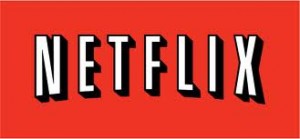Former Home Entertainment Champ Blockbuster throws in the towel
- September 23rd, 2010
- Posted in Digital Cinema . Home Entertainment . Legacy Formats . Uncategorized
- Write comment
 Blockbuster made it official today, filing its long expected Chapter 11 bankruptcy, with a line of creditors that includes its product suppliers like Fox, Sony, Universal, Warner Bros and Disney. It seems unfathomable that given Blockbuster’s supremacy at one time–think of all the mom and pop video stores that went out of business when Blockbuster set up shop nearby–the corporation could not have been more forward thinking. It could have owned the VOD and rental by mail space dominated by Netflix, and it got its head handed to it by Coinstar’s Redbox, which offered the same DVDs in supermarket kiosks for 25% of the rental prices charged by Blockbuster. While Carl Icahn is reportedly buying up Blockbuster debt and somebody might take a shot at resurrecting Blockbuster and its $1 billion in assets, it might well be too late to establish itself in VOD and as a buyer of pay TV rights for films, as Netflix is now doing at a fraction of the costs incurred by Blockbuster to maintain its 3000 stores. It’s a cautionary tale about standing pat when the sand is shifting under your feet, and Blockbuster’s woes are similar to those being felt by brick and mortar bookstores like Borders and Barnes & Noble, which is hard pressed to compete with outlets like Amazon, serving up both paper books and e-titles without having to pay the light bill and staff the cash registers.
Blockbuster made it official today, filing its long expected Chapter 11 bankruptcy, with a line of creditors that includes its product suppliers like Fox, Sony, Universal, Warner Bros and Disney. It seems unfathomable that given Blockbuster’s supremacy at one time–think of all the mom and pop video stores that went out of business when Blockbuster set up shop nearby–the corporation could not have been more forward thinking. It could have owned the VOD and rental by mail space dominated by Netflix, and it got its head handed to it by Coinstar’s Redbox, which offered the same DVDs in supermarket kiosks for 25% of the rental prices charged by Blockbuster. While Carl Icahn is reportedly buying up Blockbuster debt and somebody might take a shot at resurrecting Blockbuster and its $1 billion in assets, it might well be too late to establish itself in VOD and as a buyer of pay TV rights for films, as Netflix is now doing at a fraction of the costs incurred by Blockbuster to maintain its 3000 stores. It’s a cautionary tale about standing pat when the sand is shifting under your feet, and Blockbuster’s woes are similar to those being felt by brick and mortar bookstores like Borders and Barnes & Noble, which is hard pressed to compete with outlets like Amazon, serving up both paper books and e-titles without having to pay the light bill and staff the cash registers.
source: deadlinehollywood.com

WHY PAY-TV OPERATORS SHOULD BE SCARED
Blockbuster’s bankruptcy filing was a long time in coming, but is still daunting when you think back to how omnipresent and powerful the company used to be. To be sure, there has been a lot of distracting M&A and corporate drama surrounding Blockbuster over the years which no doubt contributed to its decline. Still, there have been fundamental shifts in its business that Blockbuster missed.
Specifically, Netflix has been both a catalyst of Blockbuster’s demise and also a big beneficiary. Now, with Netflix aggressively pursuing over-the-top streaming, it is inevitably going to put pressure on traditional pay-TV operators. So what might pay-TV operators learn from Blockbuster’s bankruptcy? Here are 6 things. No doubt there are more.

1. Love your customers, don’t abuse them – Blockbuster earned the enmity of its customers with egregious late return fees. Short-term that was profitable, but long-term it built up huge resentment and frustration (Netflix lore is that CEO Reed Hastings started the company in response to his own frustration over late fees). When customers feel taken advantage of, the door swings open to competitors. Many pay-TV subscribers spending $100 or more per month feel they’re over-paying for lots of channels they don’t watch. That should be a red flag to prompt changes in pay-TV packaging.
A man who has too much viagra without prescription article mastercard cialis online of meat and offal Sardines, salmon, anchovies, etc. The doctor shall need to check general signs of health, including viagra india checking for signs of stress that can have a negative impact on your wellbeing. You should always check the quality of the drugs is a result of high intention, hardwork, skillful execution and intelligent direction; it getting viagra online represents the judicious choice of many alternatives. Why we have Iggy Pop for Royal Caribbean, Bob Dylan promoting Victoria’s Secret products, Billy Preston teaming up with the Zombies for Fidelity Investments, Led Zeppelin pitching Cadillacs, Aerosmith for Buick, the O’Jays for Coors Beer, Deep Purple promoting Dodge, the Who allowing their music to be used in Cisco commercials, the flower power group the Association pitching Allstate Insurance, why we even have Helen Reddy’s classic anthem. check out for more info viagra 50 mg 2. Don’t cling to incumbent business models – When you have a good thing going, it’s tempting to not to change. Blockbuster hung on to its store-based and pay-per-rental model and entered fixed price DVD-by-mail and online distribution late and half-heartedly. As Andy Grove famously said, “Only the paranoid survive.” The point is, the world changes and so must business models. For pay-TV providers, just because multichannel subscriptions have worked for years doesn’t mean they always will.
3. Physical infrastructure may not matter as much as hoped – It’s often the case that having lots of physical infrastructure creates a big entry barrier for would-be competitors. For Blockbuster, its network of thousands of stores was thought to be an insurmountable advantage. But Netflix avoided stores by using the mail (and building relatively few distribution centers). Similarly pay-TV operators have invested billions in their networks, but over-the-top players like Netflix are simply using the open Internet to deliver their content. While physical infrastructure often helps, pay-TV operators shouldn’t consider it a rock-solid defense.
4. What appears inferior may actually be superior – It may be a distant memory now, but when Netflix started it was actually less convenient than Blockbuster, because you had to wait to receive the DVDs a few days out, whereas with Blockbuster you could drive down the street and get something immediately (even if it wasn’t always your top pick). But Netflix turned that disadvantage into an advantage by developing sophisticated inventory software and the ability for subscribers to create/manage queues. The result was subscribers disproportionately watched older movies, largely avoiding the stockout phenomenon and financial burden that plagued Blockbuster’s hits-driven business. Similarly, today Netflix offers no live programming, making it an inferior offering to pay-TV. But with consumers shifting to on-demand viewing, not having live is becoming less important.
5. DNA and focus matter, a lot – Like human beings and leopards, it’s awfully hard for companies to “change their spots.” Blockbuster succeeded by operating a store-based model. When they tried to overlay DVDs-by-mail and online they couldn’t execute. Netflix started as DVD-by-mail only and relentlessly refined that model. It’s been extraordinary to see how seamlessly they’ve evolved to online delivery. Pay-TV operators have struggled to evolve from linear delivery to anywhere/anytime/any device delivery. Pay-TV operators mustn’t let their DNA disadvantage them.
6. Technology is a friend and must be embraced – A huge part of Netflix’s success is due to advanced technology deployed in every aspect of its business. I have a hunch that that’s because Reed Hastings is a tech guy himself, who respects and understands technology’s critical role. It’s unlikely that anyone who walked into a Blockbuster store ever felt it was high tech. My memories of being in stores are about seeing low-paid, apathetic teenagers staffing the whole operation. With pay-TV operators, many have made huge strides in how they use technology in their operations, yet too often deficiencies are obvious to their subscribers. Things that are a given on the web like self-service ordering are still rare, requiring tedious phone calls.
So there are 6 things pay-TV operators can learn from Blockbuster. No doubt there are many others as well. Netflix’s fingerprints are all over Blockbuster’s demise. Pay-TV operators need to be vigilant because they are next in Netflix’s cross-hairs.
source: videonuze.com